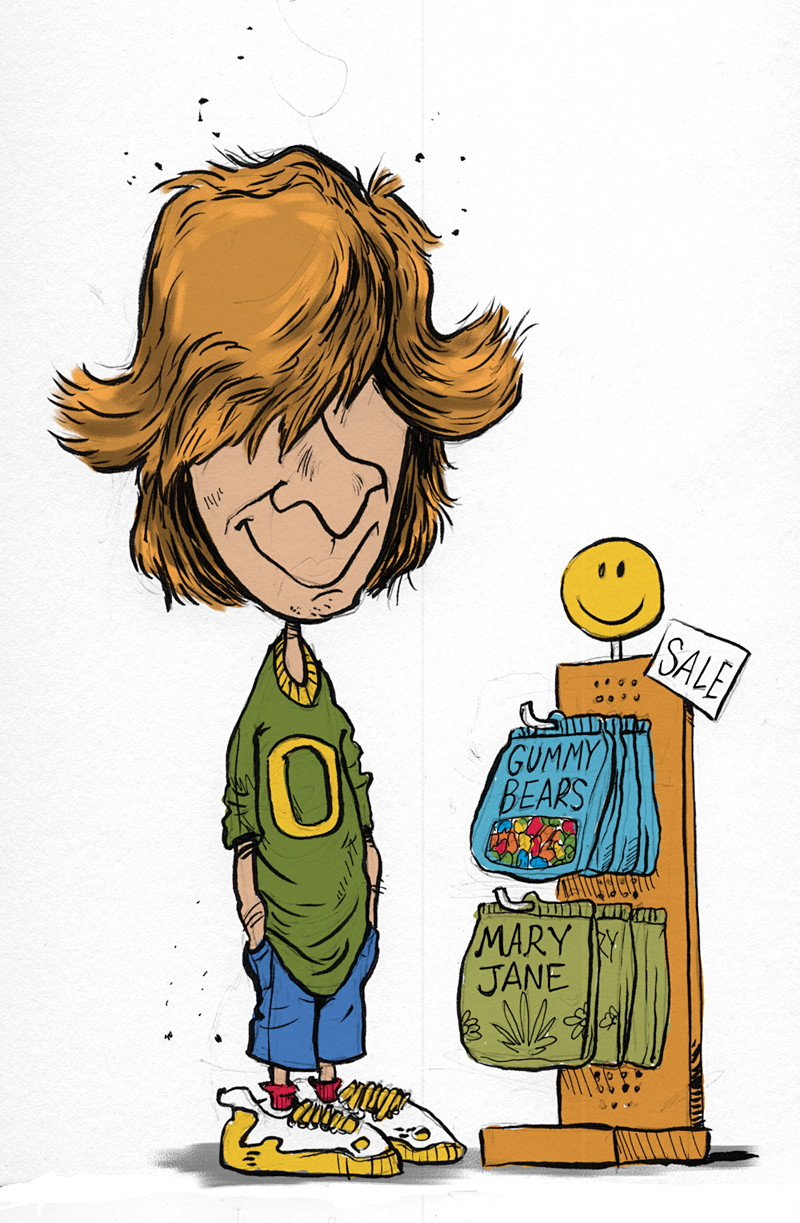The top federal prosecutor in Oregon and 33 of the state’s district attorneys announced last week that they are going to put an end to prescription pot sales. The authorities say that although Oregon currently has nearly 40,000 people enrolled in its voter-approved medical-marijuana program, law enforcement must take action because the system violates federal law and is “putting marijuana in the hands of more and more healthy kids.” But is that really true?
The first part, of course, is accurate: Oregon’s medical-marijuana system violates federal law. This is the same rationale used by eastern Washington prosecutors for raiding Spokane dispensaries in recent weeks. Pot is still a Schedule I controlled substance—along with heroin, cocaine, and LSD—and therefore has no legitimate medical use in the eyes of the federal government. There’s no wiggle room here; a law is a law is a law, and it is a prosecutor’s duty to uphold that law no matter how misguided or ineffective it may be.
And in Oregon, where voters approved medical marijuana in 1998, selling weed in any way, shape, or form is still technically forbidden by state law. Eligible patients must get their medical grass from “registered grow sites” regulated by the Department of Health. Dispensaries are not permitted, but disabled tokers are allowed to get their daily doses from “designated primary caregivers.”
Nevertheless, dozens of cannabis clubs have sprouted across Oregon (mostly in Portland) over the past decade. These are places with couches, vaporizers, and snacks where card-holding pot smokers can use—and, in rare cases, replenish—their supply. These are the type of businesses that have the state’s top lawmen in a tizzy.
U.S. Attorney Dwight C. Holton, 33 district attorneys, the state Sheriff’s Association, and the Oregon Association of Chiefs of Police declared last Friday, June 3, that “individuals and businesses that conduct sales of marijuana face the risk of prosecution, civil enforcement action, and seizure of assets.”
Justifying the crackdown, the prosecutors have repeatedly stated that the state’s medical-marijuana system is making it easier for kids to get high. In addition to Holton’s claims about weed finding its way into “the hands of more and more healthy kids,” Marion County District Attorney Walt Beglau made this proclamation: “Drug traffickers are hiding behind the medical-marijuana law to protect their sham operations. We have to rein in this outlaw atmosphere before any kid can walk into a storefront on Main Street in any town in Oregon and buy marijuana illegally.”
Holy crap, if kids are buying bags of reefer as if they were gummy bears, then statistics about teenage marijuana use must be off the charts! Yet when the Partnership for Drug-Free America surveyed 3,287 ninth through 12th graders in 2009, it found that pot use by high schoolers nationwide has actually decreased since 1998, the year Oregon adopted its medical-marijuana system.
According to the polling, in 2009 25 percent of teens reported smoking marijuana in the past month. The previous year it was 19 percent, and before that the figures had been steadily declining for the entire decade. In 1998, 27 percent of teens surveyed said they had smoked pot recently.
What’s more, according to a 2008 study by the Marijuana Policy Project, the declines in teenage marijuana use are even more pronounced in states that allow medical pot. “No state with a medical-marijuana law has experienced an increase in youth marijuana use since their law’s enactment,” the research found. “In fact, all states have reported overall decreases—exceeding 50 percent in some age groups—strongly suggesting that enactment of state medical-marijuana laws does not increase teen marijuana use.”
In Oregon specifically, the pot-smoking trends “are slightly less favorable than nationwide trends, although teen use is still down overall.” The study, which relied on data provided by the Oregon Department of Health, found that among more than 20,000 eighth and 11th graders, pot use declined across the board—up to 33 percent in some demographics—from 1998 to 2007.
A spokeswoman for the Oregon U.S. Attorney’s office did not immediately respond to a phone call and e-mail from Seattle Weekly asking about the discrepancy between the rhetoric in their press release and the actual statistics. Until they get back to us, it’s probably safe to assume they’ve just been blowing smoke.







